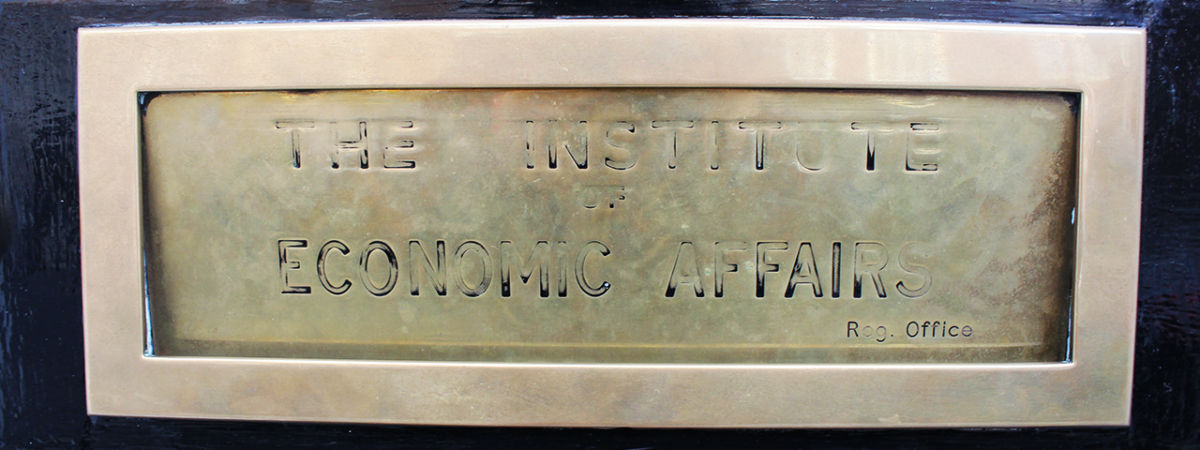Government meddling has put Britain’s trains on the wrong track
SUGGESTED



A recent survey found that 60 per cent of the public would like to see the industry renationalised, a policy supported by the Labour Party. The problems facing the rail sector – such as high subsidies, overcrowding, and unreliable services – are typically blamed on privatisation.
In reality, though, many of these problems are the result of government intervention. The infrastructure – tracks, signalling etc. – was renationalised in 2002 with the creation of Network Rail, a government-owned company. And Network Rail was largely responsible for many of the industry’s recent crises, including the timetable debacles on Northern and Thameslink.
Moreover, the ‘private sector’ train operators are very heavily regulated by the government. For example, many of their fares are subject to price controls, which cause overcrowding on peak-time services by artificially boosting demand. But one of the most damaging interventions of all was the decision to impose an artificial structure on the industry.
Several studies, including official government reports, have concluded that this created large inefficiencies, pushing up subsidies as a result. Throughout railway history, the same firm almost always both owned the tracks and ran the trains – a structure known as vertical integration. But the government adopted a ‘separated’ model during privatisation, with one firm owning the tracks and several different firms running the trains. It was hoped this approach would increase efficiency by stimulating competition between operators.
A broadly similar model was tried on the pioneering Stockton and Darlington railway, which opened in 1825. Coach companies operated horse-drawn trains and paid a toll to the track owners. But the system quickly collapsed. If trains broke down, departed late or moved slowly, they would block the route and delay competitors. The inflexibility of railway technology kept trains trapped on the rails and, unlike road vehicles, unable to drive around blockages. High levels of interdependency meant decisions by one firm had significant effects on the others. Disputes arose about who was to blame for the problems and who should pay compensation. Fights frequently erupted between drivers.
All this hassle wasted resources and reduced efficiency, so eventually the track owners decided to buy out the coach firms and run trains themselves. After the railways were re-privatised in the 1990s, comparable problems emerged. In order to manage disputes between the track owner and different operators, complex rules and contracts were introduced, along with government agencies to oversee them.
Large numbers of consultants and officials joined the industry, at substantial cost. Long-term investments also create costs for separated models. If firms want to upgrade a line to boost passenger numbers, then both track owners and train operators must be involved. Extra fare revenues initially go to the operators, so they must agree to pay higher track charges in order to pay for the upgrade – otherwise there is little incentive to undertake the project. Expensive new rolling stock might be required to improve the service, and the new vehicles might not be suitable for other routes, increasing the financial risks.
A high degree of such ‘asset specificity’ increases the interdependency of track owners and train operators. And what if the project hits problems? It might go over-budget or be finished late – or perhaps the planned outputs can’t be achieved at acceptable cost. The complex contracts needed to cover such possibilities might involve protracted negotiations. Investors also face the risk that if original specifications aren’t met, payment from the train operators will be withheld or compensation demanded (as happened with the £9 billion upgrade of the West Coast Main Line, completed in 2008).
Freedom from contractual obligations might give an integrated firm more flexibility to adapt to changing circumstances. Rail firms therefore face a trade-off. It is possible that separation will foster more competition, improving incentives for cost control and innovation. If efficiency is significantly higher under such a model, split ownership might be more profitable. But separation could also bring efficiency losses. Economies of scale could be lost if tasks and assets are duplicated. And ‘transaction costs’ could be higher – costs from dealing with separate firms, such as the complex and risky contracts outlined above.
Without state intervention, the rail industry could evolve according to market conditions. If firms thought separation would increase profits, then integrated companies could split up. If firms thought integration would increase profits, track owners could merge with train operators. Major problems arise when governments decide to impose a particular structure on the industry, not allowing firms to merge or split up. This risks setting an inefficient model in stone, raising costs for taxpayers and passengers, and in the process bringing privatisation into disrepute.
This article featured in the latest issue of EA Magazine. Read in full here.




